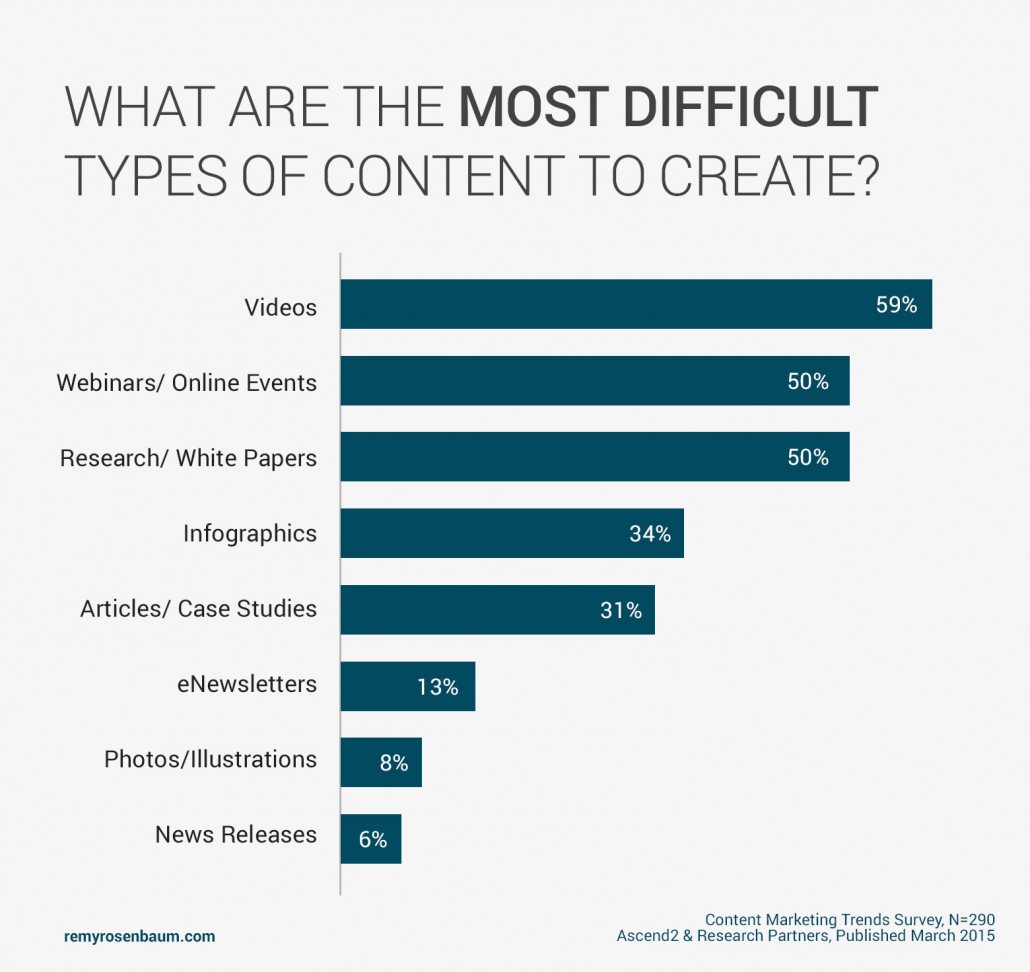Webinars Don’t Get the Love that They Deserve
At a recent computing convention where we exhibited in San Jose, our CEO Eli struck up a conversation with one of the attendees at the show. The bold-faced company name on the attendee’s badge jumped out at Eli. This was a company that our sales team prospected and sought to connect with a few times to no avail. After Eli used the standard opener—if the prospect had heard of our company, Jethro—he answered, “Of course! I saw your webinar and I was intrigued by your tech. Tell me more.” A week later we moved forward with a POC.
Webinars can be one of your most effective B2B marketing media regardless if your audience is like Jethro’s, whose main personas are all niche techies like database architects and CTOs, a B2B healthcare startup focusing on conquering Cancer or even a boutique social media marketing agency that wants to inform you about the Top 10 Ways to Slay on SnapChat.
More than just hard-sell lead generating opportunities, live webinars are effective as a conversational long-term approach. A successful webinar will be about an interesting topic that is relevant to your audience and delivered by an authority on the subject matter.
Like all marketing campaigns, there are good webinars and bad webinars. In this post I’ll assume that you’re going to produce a kick-ass webinar using your creative marketing super-powers. I’m going to presume that your webinar will have an engaging topic or case study performed by a well-seasoned host or hosts who are comfortable with their topic and not afraid of public speaking. You can’t pull ROI out of thin air—plan this out and it’ll come back to you exponentially.
More than 60% of marketers include webinars as part of their content marketing programs according to the CMI. However, in a research survey by Ascend2, only 30% of marketers say that webinars and online events are effective. These two stats are far from water tight, but they point to the fact that webinars are highly underrated! Many marketers don’t understand the full picture regarding the effectiveness of a webinar and how it extends further than the 30 minute live webinar. The topics from research/ white papers and case studies are effective content for webinars, which are then repackaged as video content. You can quickly see how webinars combine different marketing media together and easily produce subsequent content. Webinars kill two or three content marketing birds with one stone!

Although marketers may think that a webinar is difficult to produce, the benefits of a webinar go beyond short-term customer conversion and have far reaching effects. As a content marketing tool, webinars work simultaneously on multiple parts of the funnel. The audience is exposed to your brand at multiple touch points via promotion of the webinar, the webinar itself and subsequent follow up touch points. Potential leads will happily hand over their coveted contact info in exchange for a well thought-out and organized webinar—especially about industry trends by an authority on the topic.
Brand-building is an unavoidable (and desirable) side effect of a webinar and as such should be within your brand guidelines. As an interactive and immersive content experience, webinars empower you to build brand awareness, brand equity and build trust by establishing yourself an authority in your field. If you’re that cancer-conquering B2B healthcare startup, you’ll want to do a webinar with doctors and researchers that have the credibility necessary for your product. Make sure your webinar is structured in an enjoyable and informative way with real added value to the audience member. You want the viewer to finish watching the webinar with the opinion that this was a high-value way to spend their time, that they can trust your brand and that they’d like to do business with you.
The most effective webinars are interactive and conversational. Audience participation is a two-way street that not only enriches the webinar topic, but also lends insight to what potential clients are thinking. At our company, we always review the questions that participants ask and see how we can update our marketing materials assuage their concerns. Sometimes questions indicate industry trends that are becoming more prevalent and should be addressed.
A Live Webinar is an Immersive Virtual Happening
Hosting events and meet-ups can be effective ways to meet prospects in the real world and forge new relationships with potential clients and partners. For smaller companies that can’t afford the overhead of hosting such a large event, as well as larger companies that want to be more targeted, a webinar is the perfect event alternative. A webinar is the most immersive content experience currently available. I’ve yet to experience a VR presentation, although that might not be far behind.
Much of the same marketing groundwork needs to be done to promote online and offline events. You need to brainstorm the idea behind the event or talk and make sure that it will be relevant and interesting to your client base. You’ll need to secure hosts, send out email invitations and build a landing page and set-up lead-collection forms on your marketing automation software or CRM. That’s already quite a lot of work to accomplish—especially for a smaller marketing team. By this point (after a FOMO-inducing reminder email) you’re ready to start the webinar at fairly little cost. If you’re orchestrating a real-world event or meet-up, this is just the beginning.
Webinars Are Cost-Effective with High ROI
The logistics and operations surrounding a real-world event pose a barrier for pulling it off at all. At a previous company I was with, before webinars were a big thing, the CEO was dead set on doing a product roadshow. We were a small marketing department and the resources necessary for pulling this off were draining and detrimental to our other marketing activities. The events were costly both in man hours and in cold hard cash, and after two events we decided to call it quits. We spent a half-a-year’s worth of our online advertising budget in two events and had zero clients to show from it.
Webinars on the other hand, are convenient ROI-friendly marketing endeavors because they’re so inexpensive to produce and have such high gains. According to ReadyTalk, the average cost of conducting a webinar is between $100 and $3,000 depending on promotion and technology costs. Today the tech to produce webinars is dirt cheap and high-quality. We use Fuze, which for $40/month will give you unlimited HD webinars for up to 250 people with HD recordings. That’s quite a departure from the clunky software of just a few years ago.
Not only do you see rewards from the actual live webinar, but also from all of the marketing activities surrounding and promoting the webinar. ROI is also higher with webinars due to its wider reach. A potential real-world attendee may want to go to your spectacular event, but his kid’s ballet recital is at the same time across town… or in another town… or time zone. Residing online, the webinar knows no boundaries, and a recorded webinar lives on further bolstering ROI as more and more people consume your content on-demand without any time constraints.
A Webinar Is the Gift That Keeps on Giving
When done right, a webinar is far more than just the half-hour that you’re on the air. Like I said before, in order to promote a webinar, you need to send out emails, create landing pages, possibly even campaigns surrounding this. The webinar in and of itself is a happening that creates buzz! This is a live event and as such drums up some excitement when relevant and with an authority who can talk on the topic. If you’re a marketing manager from a tech company, find a product manager with the cred to do the talk.
After your webinar, you have the added benefit of not only delivering the recorded webinar, but also creating more opportunities to further fuel prospects’ journey down the funnel in real-time. Your sales team will now how a list of qualified leads that can be contacted directly and encouraged to convert.
In addition to the buzz generated from promoting the webinar, you also have the residual webinar aftershocks. This should be treated as a new piece of content and promoted as such. Since you have a recorded copy (you remembered to hit record, right?!) you now have content to put on your YouTube channel, push on social media, email both to the attendees and also to your entire list, and possibly include in future drip marketing campaigns. From one marketing channel, you now have six or more!
Non-gated webinars boost SEO and generate results. I see leads coming in that originated from searching specifically for webinars on a certain topic and also from searches with keywords from the webinar. When posting the webinar, it’s always best to set up a dedicated keyword page complete with descriptions about the webinar.




Leave a Reply
Want to join the discussion?Feel free to contribute!